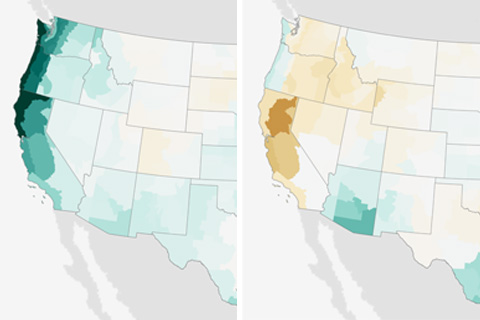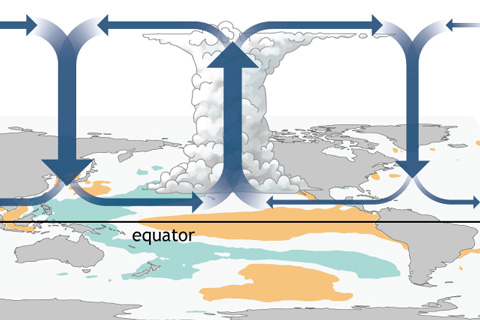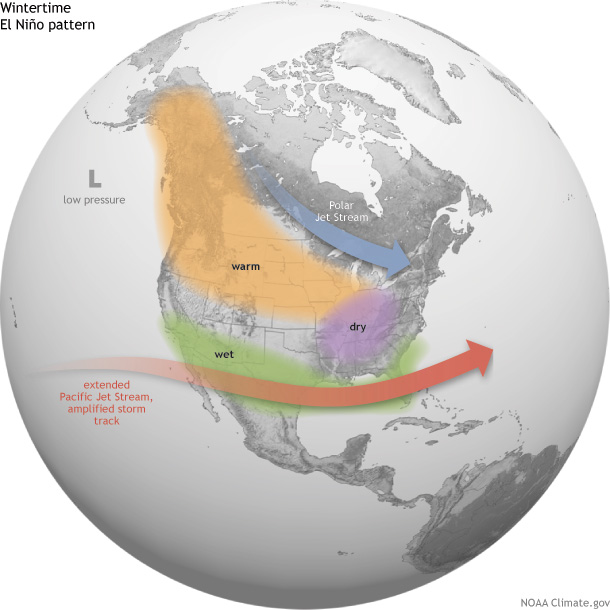
Few places on Earth are more strongly affected by El Niño than the Galápagos Islands, which straddle the equator in the eastern tropical Pacific. Guest blogger Kris Karnauskas explains why these unique islands are so biologically productive—and what happens to that productivity during El Niño.
El Niño is a global phenomenon. Guest blogger Dr. Andrew Watkins shines some light on El Niño's impact across the world in Australia.

ENSO forecasters are predicting this El Niño will be a strong one. What does that mean?

NCEI's Jake Crouch reflects on entering the field of climate monitoring during a historic drought in the Southern Plains.

Guest blogger Dennis Hartmann makes the case that warm waters in the western tropical Pacific—part of the North Pacific Mode climate pattern—are behind the weird U.S. winter weather of the past two seasons.

An El Niño means lots of rain for California, correct? Well, some of the time, but not always.

If you are someone who wants more or stronger ENSO events in the future, I have great news for you–research supports that. If you are someone who wants fewer or weaker ENSO events in the future, don’t worry–research supports that too.

El Niño could bring increased rain to California. How might this affect the threat of wildfire?

How do changes in the equatorial Pacific Ocean impact places much farther away? The answer for the tropics, at least, lies in changes to the equator-wide atmospheric circulation called the Walker Circulation.

How does El Niño affect U.S. winter temperature and precipitation?